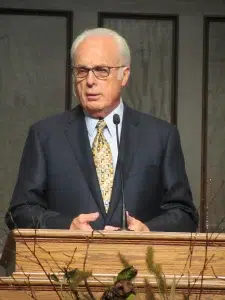Photo: The Roman Catholic Cathedral of the Immaculate Conception, Syracuse; via Wikipedia.
Earlier this year, survivors of clergy abuse in the Roman Catholic Diocese of Syracuse gathered in court to describe how their lives were altered by the abuse they suffered as children. After years of litigation and bankruptcy proceedings, a $176 million fund has been set aside to compensate the 411 people with claims against the diocese, Syracuse.com reported today.
The total payout will not be divided evenly. Instead, compensation will be based on a point system designed to reflect the severity and lasting impact of each survivor’s experience. If divided equally, survivors might receive up to $400,000 each, but the actual amount will vary depending on factors such as the duration and nature of abuse, the psychological and physical effects over time, and the survivor’s involvement in legal proceedings.
How the Catholic Diocese of Syracuse Sexual Abuse Compensation Fund Works
The court-appointed reviewer, Roger Kramer, has overseen similar processes in diocesan bankruptcies across the country. His firm will review each claim, verify its authenticity, and assign a score of up to 200 points. The score will be based on three main categories:
- The nature and circumstances of the abuse, including how long it lasted, where it occurred, and whether the perpetrator groomed the survivor.
- The personal impact, such as long-term effects on health, relationships, or spiritual well-being.
- The level of involvement by the survivor, including whether they filed a lawsuit or gave testimony.
The percentage of points a survivor receives will determine their share of the $176 million fund. Survivors who disagree with their score may appeal for a fee.
Similar frameworks have been used in dioceses nationwide, with examples ranging from Los Angeles ($880 million) and New Orleans to Minnesota and several more. Although the methods vary, the goal remains the same: to assign monetary value to deeply personal and painful experiences. As one nationally recognized mediator noted, the seriousness of abuse, how many times it occurred, and the age of the child all factor into the outcome.
A National Trend of Diocesan Bankruptcies
The Diocese of Syracuse filed for bankruptcy in June 2020 amid a rising number of lawsuits. The move froze litigation while the bankruptcy court managed how to handle claims collectively. Other dioceses in New York, Pennsylvania, and beyond have followed similar paths, using bankruptcy to consolidate thousands of lawsuits tied to clergy abuse.
The approval of Syracuse’s plan is expected soon. Once finalized, survivors may begin receiving payments within a few months. This marks the final stage of a case that began nearly four years ago and represents another chapter in the Catholic Church’s decades-long reckoning with widespread abuse and cover-ups.
[Update: On Aug. 28, 2025, Catholic News Agency reported that a federal bankruptcy court accepted the Diocese of Syracuse, New York’s $176 million abuse settlement plan, resolving a yearslong negotiation process between the diocese and victims, as well as between the diocese and insurers that will pay into the settlement fund. The diocese will contribute $50 million, with $45 million from parishes and $5 million from “other Catholic entities” associated with the Syracuse Diocese. The remaining $76 million will be contributed by diocesan insurance companies.]
For survivors, the road to justice can be long and painful. Many say the real value of seeking accountability goes beyond financial compensation; it’s also about finally being heard, validated, and empowered to move forward. If you or a loved one has suffered abuse in a religious setting, you may still have legal options. Learn more in our Catholic Sexual Abuse Lawsuit Guide, and start your free case review process by filling out the brief form below.




